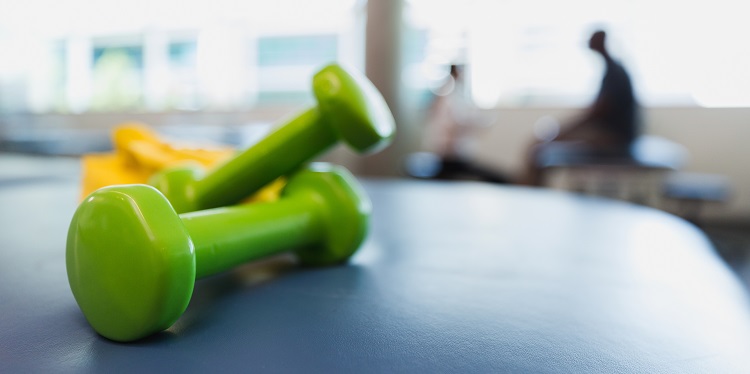The Importance of Rehab When Recovering from Covid-19
Patients recovering from Covid-19 experience a variety of negative side effects, both cognitive and physical, and without rehabilitation, those side effects can continue for much longer if not permanently.
In a study published by The Lancet, 76% of Covid-19 patients reported that they were still experiencing at least one symptom associated with the Covid-19 six months after they were discharged from the hospital, including 63% who reported experiencing fatigue or muscle weakness at the time of the evaluations. According to the researchers, fatigue and muscle weakness were the most-reported symptoms among the participants at the six-month follow-up evaluations.
Fatigue and muscle weakness are two main physical symptoms that patients experience during and after being diagnosed with Covid-19. After only three days in the ICU, a patient may lose up to 9% of muscle mass, while some reports indicate brain scans resemble that of a traumatic brain injury. That’s where the role of rehabilitation comes in.
“It’s important not to wait (to start rehab) – the longer you experience muscle atrophy, it becomes a vicious cycle,” said Rich Stieglitz, Director of the Department of Rehabilitation at Tx:Team in Frederick, MD. “If you’ve become deconditioned and weak, you could start to experience back pain and joint pain; you’re at risk to hurt yourself if you’re not strong enough. When you don’t feel good, you don’t move. When you don’t move, you don’t feel good. It’s important to get your body systems going, being able to move and move correctly.”
Rehab in the Hospital After a Covid-19 Diagnosis
After being diagnosed with Covid-19 during the acute phase, it’s important to start exercises in small doses. “The more exercises they can tolerate in short stints, the better their lung capacity can be,” said Stieglitz. “We work with patients all the way from being on ventilators to getting out of bed to walking. When you’re hospitalized due to Covid-19, your strength and endurance is compromised, you need assistance. And because of the addition of Covid fog, you lose the ability to think and connect all the dots. If a patient doesn’t have any strength and they’re gasping for air, it’s hard to tell them to turn over in bed – we have to show them. Simply sitting up and not falling over is a challenge. We’re trying to protect patients.”
Outpatient Rehab for Recovery
After leaving the hospital, it’s important to address everything from fatigue to depression in Covid patients. While we have the ability to do rehab in-person, patients can also choose to do their rehab through telehealth in the comfort of their own home during the quarantine phase for early intervention. Through telerehab, we can work on strength, endurance, cognitive, and respiratory functions with patients through physical, occupational, and speech therapy.
Covid-19 Rehabilitation
When it comes to rehabilitating a patient during or after Covid-19, there are a variety of exercises available. “Depending on the patient’s ability, we’re going to focus on generalized strength training and endurance,” said Stieglitz. “It might be a challenge to walk to the mailbox for a patient, maybe you can’t carry in your groceries. We’ll assess a patient from a functional standpoint and then work to simulate tasks that you used to be able to do but can’t do now.”
Covid rehab starts with breaking down the activity or exercise to its sub-components to strengthen the pieces a patient is struggling with and increase their function. For example, if a patient is getting winded walking a flight of stairs, a therapist can work with them to walk on a treadmill or walk against water currents in a pool.
“There are lots of techniques to try to make it fun and encouraging,” said Stieglitz. “We want to set them up for success and engage the patients so they can see their progress. It’s all designed at returning to what they were doing before they got sick so they can return to their job or recreational activities. Let’s get motion back into your life while we monitor your blood oxygen levels, blood pressure, and vital signs to make sure you’re okay and won’t crash. Covid knocks you down and we want to make sure patients are safe.”



